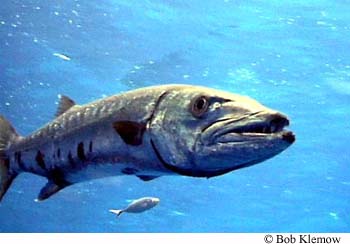
Sphyraena barracuda
FAMILY
Sphyraenidae
TAXONOMY
Sphyraena barracuda (Walbaum, 1792), West Indies.
OTHER COMMON NAMES
French: Barracuda; Spanish: Picuda barracuda.
PHYSICAL CHARACTERISTICS
Twenty-four vertebrae. Reaches 79 in (200 cm), commonly
to 51 (130 cm). Body elongate and slightly compressed. Head
large with a long, pointed snout. Mouth large, tip of maxilla
reaching to or extending beyond anterior margin of the eye in
adults. Lower jaw projecting beyond upper jaw without a fleshy
tip. Strong, pointed vertical teeth of unequal sizes in both jaws
and in roof of mouth. Two dorsal fins, far apart, the first with
five strong spines, its origin slightly behind pelvic fin origin.
Tip of adpressed pectoral fin reaching to or extending beyond
pelvic fin origin. Gill rakers are absent. Lateral line well developed,
straight, with 80–90 scales. Deep green to steel gray
above, sides silvery, abruptly becoming white on ventral surface.
Adults have several oblique dark bars, usually 18–22, on
upper sides and usually have several to many scattered inky
blotches on posterior part of lower sides.
DISTRIBUTION
Worldwide in tropical and subtropical waters except eastern
Pacific Ocean.
HABITAT
Small individuals are mostly found in shallow waters over
sandy and weedy bottoms, often forming schools. Adults usually
are solitary dwellers of reef areas and offshore areas.
BEHAVIOR
The fearsome appearance of barracudas combined with voracious
feeding
BEHAVIOR
and a notable curiosity toward divers has
made them one of the most familiar families of marine fishes.
FEEDING ECOLOGY AND DIET
Voracious predators of small fishes, squid, and crustaceans.
REPRODUCTIVE BIOLOGY
Most males mature at two years and all are mature by three
years. Some females mature at three years and all are mature at
four. The spawning season is from April through October off
southern Florida. Females contain 500,000 to 700,000 mature
eggs at one time but spawn several times in a season.
CONSERVATION STATUS
Not threatened.
SIGNIFICANCE TO HUMANS
Unprovoked attacks on humans have been documented, but they
are very rare, and most have occurred because the swimmer was
carrying or wearing a silvery, bright object, which a barracuda
misidentifies as prey. Human consumption of large individuals
may cause ciguatera, a kind of fish poisoning. The toxicity of barracuda
flesh is related to the food habits of larger barracuda,
which accumulate in their flesh toxin from their prey. There is
good evidence that the source of the toxin is a dinoflagellate. Barracuda
are not targets of a directed fishery but are caught with
hand lines, trolling gear, bottom trawls, gill nets, and trammel
nets. Catch data are not reported to the FAO by species; all
species of the genus are combined. Marketed fresh and salted.
There is a tie for all-tackle game fish record between an 85-lb
(38.5-kg) fish from Christmas Island, Kiribati, and one from the
Philippines.
Photo Gallery of - Great barracuda

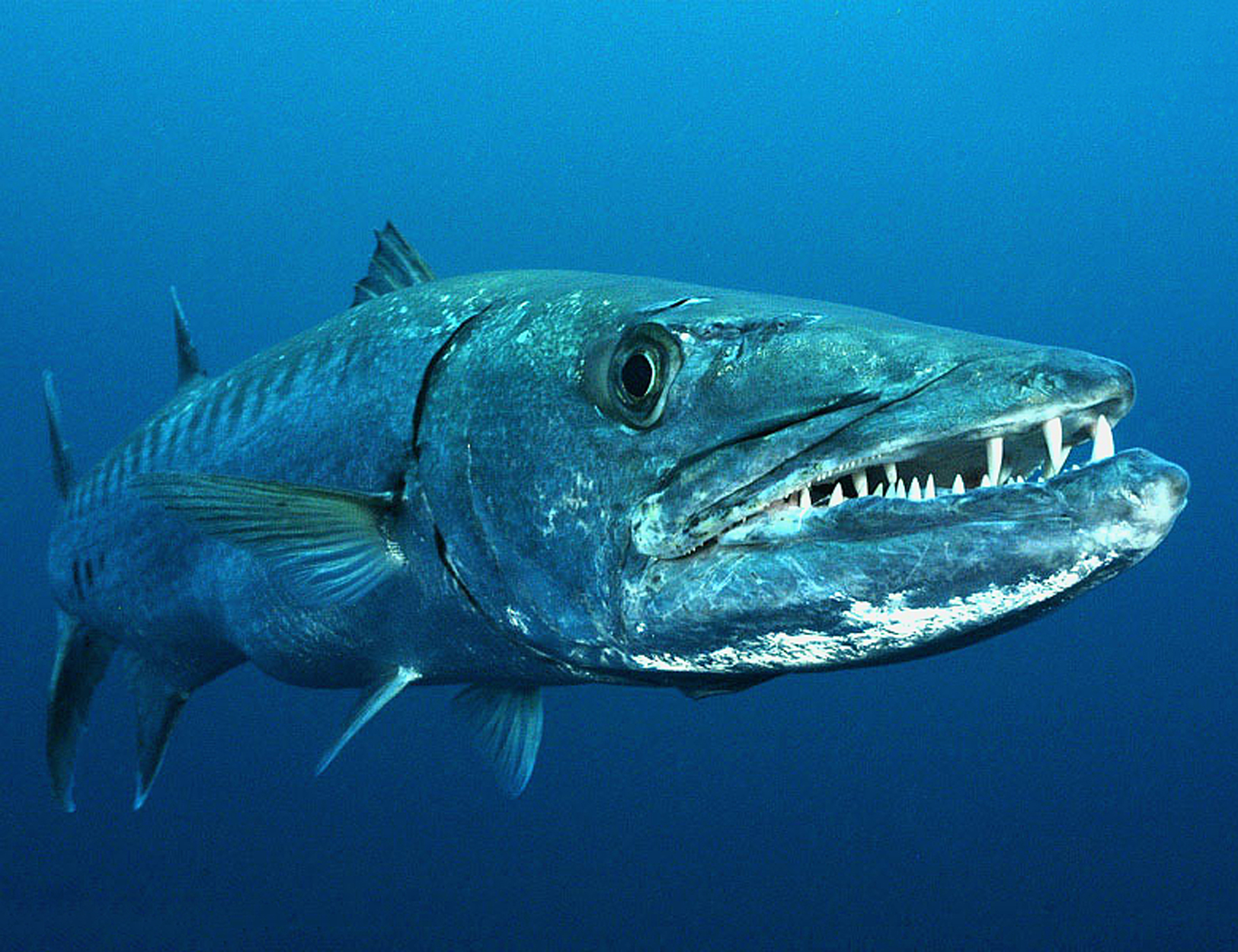
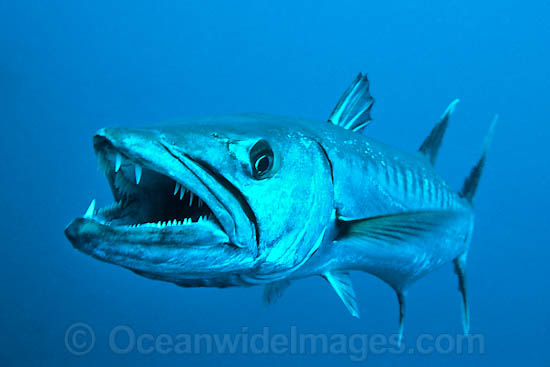
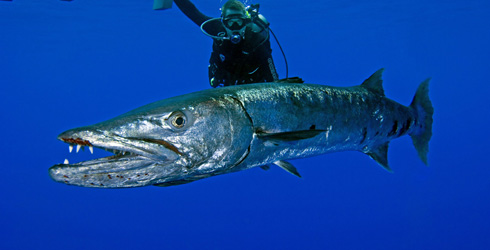
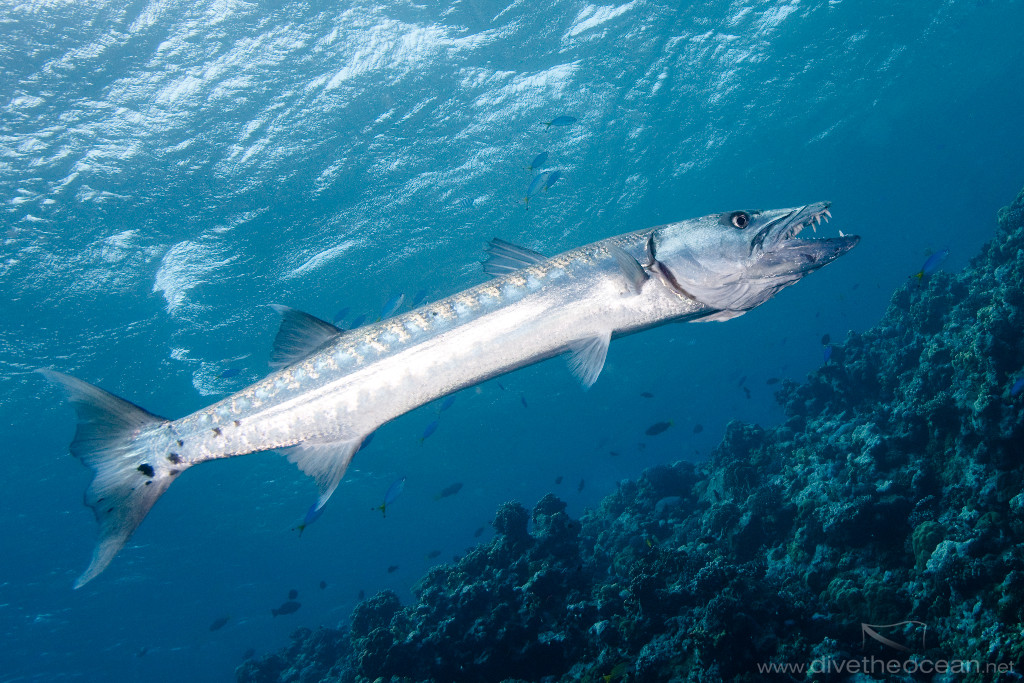
 Animalia Life
Animalia Life